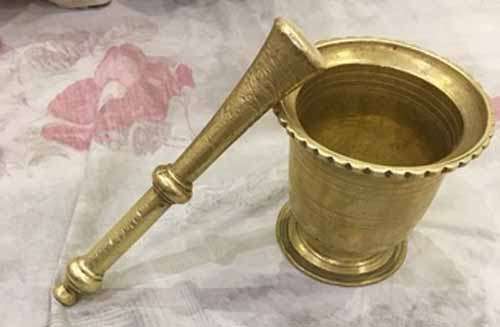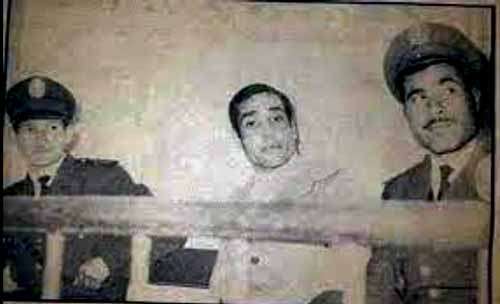Fortunately, the Arab world has only a few terrifying tales like the one I’m about to share. I was genuinely shocked when I first heard it—I never imagined Algeria harbored such individuals. Extensive searches for information revealed very little, likely due to the period when this killer was active: the 1960s, just after Algeria emerged from a seven-and-a-half-year-long war of independence. Given the scarcity of documents and sources from that time, this account may be somewhat brief, so I hope you’ll forgive me. Here is the story.
Dahou Saïd, later known as Boumahraz, was born in Aïn Témouchent, a coastal city in western Algeria. Although his exact birthdate remains unknown, we do know that he later moved to Oran, another coastal city near his hometown.
Saïd’s childhood in Oran was harsh. His father, a shopkeeper, spent all day working, leaving young Saïd in the care of his mother. According to several accounts, his mother was involved in witchcraft, a practice that was prevalent in the poorer neighborhoods of the time. The long years of colonization had left Algeria devastated, illiterate, and filled with superstition and disease. In the 1960s, many Algerians lived in slums, and superstition and witchcraft were often the only “solace” in their difficult lives.
Saïd’s mother was a harsh woman, frequently beating and mistreating him in his father’s absence. The young boy grew to despise the witchcraft sessions she held at home and the strangers she welcomed into their house. The sound of the mahraz—an Algerian mortar and pestle—echoing through the house during these sessions filled Saïd with overwhelming dread.
The turning point came one day when Saïd witnessed his mother cheating on his father. This wasn’t a one-time incident; it happened several times. During another round of abuse, Saïd threatened to expose her infidelity. In a fit of rage, his mother tried to strike him with the mahraz, but Saïd was quicker. He snatched the heavy handpiece from her and killed her with a single, devastating blow.

A mahraz is typically made of copper and used to crush grains and food. A single strike from its heavy handpiece can crush a skull—a fact that Saïd would exploit to terrifying effect in the years to come.
After killing his mother, Saïd fled to a poor neighborhood where he went into hiding. Over time, he began his new “work”—killing. His preferred weapon was, of course, the heavy handpiece of the mahraz, which he had mastered to the point of being able to kill with a single blow. This earned him the nickname Boumahraz, a name that would soon become synonymous with terror.
There are two main accounts regarding Boumahraz’s victims. The first suggests that he began visiting witches and sorceresses in their homes, pretending to be a client. Once alone with the sorceress, he would strike her with the mahraz, killing her instantly before fleeing without leaving a trace. It is also said that he targeted women who were his mother’s clients, seeking revenge on both his mother and his past. Each time he killed a woman, he would reportedly whisper as she drew her last breath, “Say hello to my mother for me, a lot.”
The second account paints Boumahraz as a thief rather than a vengeful son. According to this version, he targeted women wearing gold jewelry. He would follow them home, wait until they were alone, and then, pretending to be an employee from the electricity company, claim he had come to check the meter. Once inside, he would kill the woman with the mahraz, steal her gold, and flee. At the time, it was common for electricity company employees to visit homes to check meters, making this ruse particularly effective.
Boumahraz’s reign of terror came to an end one day when he attempted to enter a house under the pretense of checking the electricity meter. The homeowner, Mrs. Hirsh, lived in an area called Dar al-Hayat. She noticed the mahraz and, recognizing the telltale sign of the serial killer, began to scream. Boumahraz attempted to strike her, but his blow missed, and he tried to flee. However, he wasn’t fast enough. The neighbors gathered, and a vegetable seller named Belkacem threw a one-kilogram iron weight at him, knocking him unconscious. The police arrived and arrested him.
Boumahraz was captured after allegedly killing twenty women. Some accounts say his last victim survived the attack and lived a long life until she passed away in 2019, while others claim she did not survive and died later from her injuries.
Boumahraz was sentenced to death and spent a year in prison before his execution. In 1966, he was executed by firing squad in the Canastel Forest in Oran. His last words before his execution were, “I hope my mother forgives me.”
Thus ends the chilling tale of Algeria’s first known serial killer. Unfortunately, information about him is very scarce, and details vary between sources. If there are discrepancies, they are due to the lack of official documents from that time. This story is a haunting reminder of the darkness that can lurk in even the most unsuspecting places.
Sources:
The narrative surrounding Boumahraz’s crimes is based on oral histories and local legends from Oran, Algeria.firm these details.
The information about the execution by firing squad and the historical context was gathered from various historical accounts and regional folklore.

